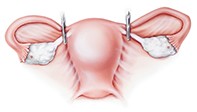Peer Reviewed
Feature Article Women’s health
A practical guide to contraception. Part 3: Traditional methods, sterilisation and emergency contraception
Abstract
Traditional methods of contraception have lower efficacies in typical use than modern methods but are valued contraceptive options. Sterilisation has high efficacy rates but is being used less as long-acting reversible contraceptives become more widely available and accepted. Emergency contraception has a vital role in reducing the number of unintended pregnancies.
Key Points
- The traditional methods of contraception – the barrier, fertility awareness-based, withdrawal and lactational amenorrhoea methods – are not as effective as modern methods but have a role as contraceptive options.
- The use of sterilisation is decreasing with the increasing availability and acceptability of long-acting reversible contraceptives.
- Barrier methods such as male and female condoms and diaphragms require sustained motivation and correct use to be effective contraceptives.
- Fertility awareness-based methods require an understanding of the female reproductive cycle and a commitment to daily vigilance of physical changes, signs and symptoms.
- All women who are at risk of unintended pregnancy should be aware of emergency contraception, understand how it works and know how to access it.
Purchase the PDF version of this article
Already a subscriber? Login here.

